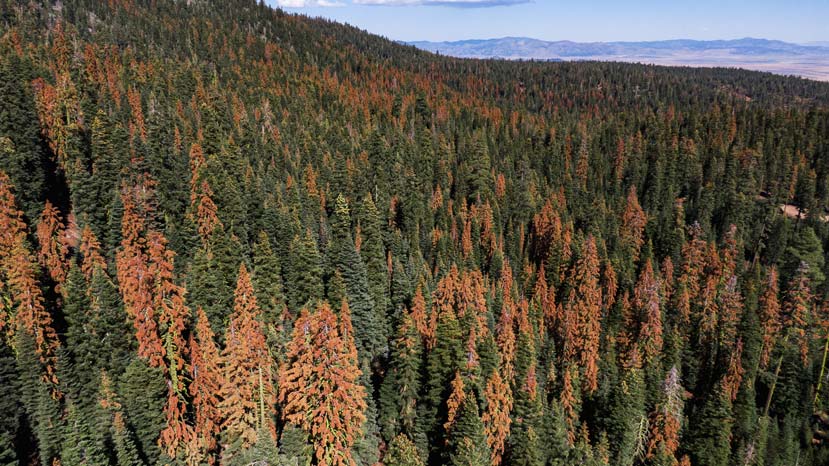Two articles listed in Nick Smith’s HFHC email today, with radically different views:
First, a biased article, IMHO — more of an op-ed — from The Hill. DellaSala get a lot of ink. :”Government failing to protect US forests most critical to fighting climate change, activists say.”
Excerpt:
“It’s the large trees — the oldest trees in the forest — that are our best carbon reservoirs,” forest scientist Dominick DellaSala of advocacy group Wild Heritage told reporters on Tuesday.
About 35 percent of U.S. forestland is composed of these forests, principally on federal land, according to a study DellaSala co-authored in September, published in Frontiers.
Yet only a quarter of those most valuable forests are under explicit protection, the authors found — and if logged over the next decade, would result in a significant uptick in U.S. emissions.
Logging of these old stands is unlikely. However, Michelle Connolly, of forestry nonprofit Conservation North, says: “Left alone, forests will largely balance themselves, she argued. “Emissions released from insects and fire are largely out of our control, whereas forestry emissions are under our direct control,” she said.”
Next, from The Daily Californian, a UC Berkeley newspaper. “UC Berkeley researchers study damages to forests, wildlife.” Researchers get the ink.
Excerpt:
“The more dense a forest is, the more vulnerable it is to disturbance,” said Zack Steel, a research scientist with the Forest Service Rocky Mountain Research Station.
Compact forests, Steel added, make it easier for fires and [the impacts of] droughts to spread, consequently endangering the animals inhabiting them.
Considering the effects of the disturbances during the past decade, the UC Berkeley study noted that management efforts are necessary for forest preservation. For example, prescribed burnings aim to rid forest floors of potential wildfire fuel, such as pine needles and fallen trees. Furthermore, in drought season, fewer trees means less competition for water within the forest.
Brandon Collins, a researcher for the study and associate adjunct professor in campus’s Rausser College of Natural Resources, noted a relevant dilemma in conservation and preservation efforts: Tension exists between temporarily placing stress on natural environments versus simply leaving an already struggling forest alone.
“We need to figure out a way to minimize the risks of actively managing these forests, while also being able to do the work we need to increase resilience in the landscape,” Steel said.
To Collins, the long-term benefits of preservation outweigh the short-term losses caused by preservation strategies such as prescribed burnings. While forests and wildlife may be temporarily affected by these tactics, they also ensure that people will be able to enjoy these landscapes for many years to come.”
